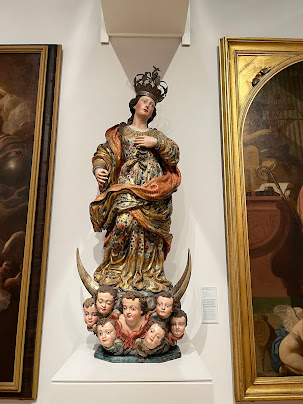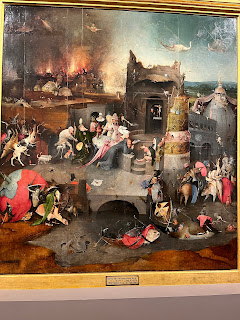You could see a museum a day for a month and not get to all that Lisbon has to offer.
We do not have a month, nor do we wish to spend all our time in museums, but we chose carefully and done our bit.
There was the Carmo Convent ruins, which was as good a visual representation of the aftermath of Lisbon's horrendous earthquake in 1755, followed by a tsunami and fires that raged for months. The roof collapsed on the congregation while attending Mass and it was never rebuilt, to remind the city of that terrible day. Excavations have revealed finds extending back to the Romans.
The Maritime Museum's best part was describing Portugal's emergence as the preeminent sea power, and the country that launched the so-called Age of Discovery in the late 1400s, thanks to the likes of Prince Henry the Navigator, Bartolomeu Dias (first to round Cape of Good Hope into the Indian Ocean), Christopher Columbus (Portuguese-trained), Pedro Alvares Cabral who was the first to sail to Brazil, and most of all Vasco da Gama, who sailed to India and onward to Japan.
The Monasterio di Jeronimo, which was built under the direction of King Manuel I who was deeply supportive of Portugal's exploration success. He was influential in architecture as well, as his name is attached to a style known as Manueline architecture. Here Vasco da Gama lies in honour.
King Manuel I also built the Belem Tower, which became famous as the last thing Portuguese sailors would see leaving home, and the first when returning.
The Museum of Antique Art was the perfect place to go one our one rainy day, filled with gothic and renaissance paintings and sculptures, gold, silver and ceramic pieces. The Portuguese school produced works that seem a little more naive and cheery than those fromItaly, France, Holland or elsewhere at the time, and with almost modern touches.
 |
| Pink cheeks on cartoon-like angels |
One of the museum's masterpieces is by Dutch symbolist, almost surrealist painter Hieronymous Bosch, looking just as enigmatic as when it was painted in about 1501. It is a triptych on the Temptations of St. Anthony and I guess you would have to know what those were to really get the most of the painting, but the images are extraordinary.
The world's oldest continuously operating bookstore, Livraria Bertrand, is a blue-tiled building on the corner of a busy shopping street in the neighbourhood of Barrio Alto. Well, ok, this is not exactly a museum, but I revere the oldest bookstore it as if it was.


























No comments:
Post a Comment